“The best short films are student shorts,” says Jacques Paisner, executive director and co-founder of the Santa Fe Independent Film Festival. In its fourth year, the festival’s four-day event, Oct. 16-20, will be held at the Center for Contemporary Arts (CCA), Lensic Performing Arts Center, The Screen, and the newly opened Jean Cocteau Cinema in downtown Santa Fe. Dedicated to screening independent films, Paisner shares that a good amount of the festival’s 2013 submissions, as of March 1, came from the student population. Filmmakers, like those from SFUAD’s Film School are provided resources, “great equipment,”as Paisner puts it, which allows for the ideal collaboration experience. “If you’re in directing class…you’ll work with a writer from the writing class and that creates a really good short film,” he says. Furthermore, the shorts can act as a “calling card” because, according to Paisner, the festival circuit is one of the only places students gain exposure. It is here they can say,”‘look I’m a student filmmaker, collaborate with me.” For two of SFUAD’s own film students, the Santa Fe Independent Film Festival was a tremendous opportunity to expose their work. “We were planning on entering the festival before we shot the film,” says SFUAD film major Seth Fuller, whose film U46-Anomaly (Anomaly in the SFIFF listings) will be screened for the SFIFF at 9 p.m., Oct. 16 at the CCA. “We went into it trying to make it as polished as possible, to be a product to showcase what we are capable of. With that being said, we wanted to focus on the local community first since we are local filmmakers.” Fuller’s 13-minute short, shot last year in collaboration with New Mexico local Scott Hussion (producer) and fellow student Emmett Meade (producer/editor), is categorized as a sci-fi drama and...
Helping Hand
posted by Maria Costasnovo
Big Brothers Big Sisters of Northern New Mexico recently held its annual gala, a fundraising event for the organization, this year held at Buffalo Thunder Hotel, drawing volunteers from all over northern New Mexico—including Santa Fe University of Art and Design. “Preparing an event like this is always hard, but fun at the same time. It is really important for Big Brothers Big Sisters since it’s one of the sources from we get most of the funds of the year for the kids,” says Chris Leslie, one of the organizers of the event. A lot of different business and people from all over northern New Mexico donated items ranging from furniture and jewelry to hotel rooms and trips. SFUAD student Dani Vondrak, a regular volunteer for BBBS, helped gather volunteers for the event. “On the event day we showed up and ask some of the people who were in charge what we could do to help out, and a lot of them were telling us that we should be behind the booths of the art pieces or vacations that are bet on, to kind of exemplify what they were about and explain why they should bet on that,” says SFUAD student Victoria Ann Dailey. This event also was an opportunity for some of the students to put their skills to use. Charles Austin Ross, a film student, helped in the gala with his camera: “I got this project by a stroke of luck. I was talking to Ron Nunnely over at the [Driscoll Fitness Center] and a friend and member of the gym came in to talk to him. Chris Alexander of Big Brothers Big Sisters was that friend, a really nice guy. He asked my major and I told him Film and so he extended an offer my way.” After the auction,...
Coming Attractions
posted by Charlotte Martinez
The Screen Presents: Oct. 11- 17 Music Majors, I have two words for you: Muscle Shoals! The true story of the small town with a big sound credits Tennessee’s spiritual “Singing River” as the birthplace of America’s most celebrated music. From the FAME Studios of Rick Hall, blacks and whites work together in the heat of Alabama’s racial hostility to create what is called the “Muscle Shoals sound.” To attest to Shoal’s reputation are artists Greg Allman, Bono, Clarence Carter, Mick Jagger, Etta James, Alicia Keys, Keith Richards, and Percy Sledge. In a documentary “propelled by gorgeous music and rich anecdotes,” David Gritten of The Telegraph calls the story of Shoals “joyous, uplifting and as funky as the music at its heart.” Opens this Friday. Intro with co-producer Raji Mandelkorn opening night, Friday Oct. 11, 7pm. Tickets on sale at https://www.vendini.com/ticket-software.html?w=14f6950e134574f6487b9ca0ea89aabf&t=tix Saturday, Oct. 12 7pm, The Jewish Film Festival presents Defiant Requiem From late 1943 to June of 1944 at the Terezín Concentration Camp, imprisoned Czech conductor Rafael Schächter led a chorus of his fellow Jewish prisoners — most of them doomed to the gas chambers at Auschwitz — in 16 performances of Verdi’s Requiem, including once before the very Nazis who had condemned them to death. With only a single musical score, this group of 150 fated Jewish prisoners would learn and sing Verdi’s momentous work. Over 60 years later Conductor Murry Sidlin, accompanied by a handful of survivors, returned to Terezin to conduct a memorial concert of the Requiem. The story of Terezín (aka Theresienstadt), the Requiem, and of Conductor Murry Sidlin’s return to conduct a memorial concert is eloquently told in director Doug Shultz’s powerful new documentary Defiant Requiem. One of the most complex and demanding of chorale works, Verdi’s 1874...
A Better Story
posted by Arianna Sullivan
For Santa Fe-based documentary photographer David Scheinbaum, art is at its finest when related to social issues. “To bring attention to some of the ills and inconsistencies of society,” says Scheinbaum, “is to use art at a higher level.” Scheinbaum’s newest book, Hip-Hop: Portraits of an Urban Hymn, is a collection of photographs of hip hop artists that sheds light on the “ills and inconsistencies” of society’s general view of hip hop culture. Scheinbaum’s book depicts a community that, contrary to its reputation, connects art to social issues. Scheinbaum first saw the discrepancy between mainstream media’s representation of hip hop culture and the actual work coming from hip hop artists 13 years ago when he drove his 12-year-old son and several of his friends to a hip hop concert at Albuquerque’s Sunshine Theater. Scheinbaum stuck around to see if the scene was appropriate for the kids and was struck by the positive atmosphere of the concert. He began to attend more shows, bringing his camera with him to try to capture the socially responsible, relevant and dynamic scene he witnessed again and again. As Scheinbaum grew closer (both literally and figuratively—he eventually gained access to the stage and backstage areas for better shooting angles) to the hip hop performers who visited Albuquerque, he realized that not only is their art form inextricable from social issues, it is much more complex and involved than most outsiders realize. Hip hop, like most creative cultures that begin at the fringe of society, arose out of a necessity to express the inequality being experienced by the marginalized. In an essay in Scheinbaum’s book, Gaye Theresa Johnson, an associate professor of black studies at UC Santa Barbara, explains that the art form originated as and still is “a serious...
Mix it Up
posted by Tim Kassiotis
Before you attend the October MIX, here are some take-aways from the last one. Taking place the third Thursday of almost every month, Santa Fe Mix is a social event full of mingling, splashy cocktails, art, and making connections. The mission of Santa Fe Mixes is to bring together all the “young” people in Santa Fe and provide a space for people to network, share ideas, develop business strategies, or collaborate on art. At this point you’re probably thinking “Really? A social gathering in Santa Fe? I’d rather go to a party at the nursing home”. Don’t be so quick to judge. The Sept. 19 Mix was full of emphatic conversation, loud music and splashy drinks that brought out the socialite in a city full of introverts. Sticky MIX was held at Matthew Gray’s studio at 821 W San Mateo Road. It’s that giant loft studio attached to Chocolate Maven. The name was inspired by Mathew’s work on display, which consisted of six sculptures made from hard cast candy and four large format photographs of other sugar creations. Each sculpture or photograph was lit with a flood light, presenting the vibrant sugar coated works with an ominous tone. Dozens of mixers gathered around the food table, eagerly waiting for the next full plate of refreshments. Chocolate Maven provided the catering; making sure every one had a bite of one of their exquisite finger sandwiches, cookies, or signature chocolates. Downstairs Dj Aztec Sol spun records and dropped beats, making sure that the Mix was elevated from a normal gallery opening to party status. One of the main purposes of a Santa Fe Mix is to collect data. This is done primarily with surveys handed out at the door. Although not mandatory to get in, filling...
Q/A W Tyler Sinnott
posted by Nick Martinez
In the second of a series of Q&A sessions with SFUAD students, Jackalope Magazine speaks with Graphic Design Department Junior Tyler Sinnott. Sinnott tells us about his start in graphic design, his hat collection, and whether or not he’s a Masshole. Jackalope Magazine: What made you pursue graphic design in the first place? Tyler Sinnott: It all started back in high school. I originally wanted to be a cook. I got a cooking job in high school, but got fired because it was a small restaurant and the woman had a set way of doing things. And that ruined that dream. Then my dad bought a new computer that had Photoshop Elements, which is like the Microsoft Word version of Photoshop. I started taking the pre used images they had and put them on shirts and my friends started getting interested in what I was doing. JM: Were you just doing that as a hobby? TS: Yeah yeah yeah. Just doing it after school. Started making shirt designs that were garbage, they were terrible, but I posted them on Facebook and on MySpace and kept getting good feedback. Then I started my own shirt company. I did three designs and had 25 of each design and looking back they were like the worst things I ever could have printed on a shirt. JM: Why did you choose SFUAD? TS: You know, I was just looking for something different. I was an East Coast kid all my life: New York, Massachusetts, New Jersey. I wanted something different and the opportunity arose to come here. I came out here and looked at it and it seemed like my kind of thing. JM: You lived in Massachusetts. Are you a Masshole? TS: Am I a Masshole? (Laughs)...
One More
posted by Nick Martinez
Granite State, the penultimate episode of “Breaking Bad,” opens with Saul (Bob Odenkirk)—not Walt—entering the vacuum repair shop. The long discussed, never seen, vacuum repair man (Robert Forster!) tells Saul that while waiting for his trip to Nebraska, he’ll have a roommate. Queue Walt pacing in his bunker, finally alone with all he’s done. Now take that moment and add around four months in a snowy New Hampshire purgatory and we have the tired broken man who orders one last drink before the DEA arrives. The Walt we see for most of Granite State is a broken shell and the logical conclusion for the previous 57 hours of the show. For all of his brilliance, Walt is completely unable to acknowledge that it’s over. Before Saul leaves to go buy his three pairs of Dockers and assistant manage a Cinnabon, he gives Walt one last dose of reality: surrender. Skyler, in a nice nod to the pilot, is catatonic as the DEA illustrates the full situation. Walt’s faux confession last week was a nice gesture, but Skyler is in no way scott-free. With Walt at large, Skyler’s role in the situation still unclear, and two DEA agents missing, someone has to answer. So it falls to Skyler to be destitute, working part-time as a taxi dispatcher, and a social pariah as an alleged co-conspirator in an international meth empire. Matters only worsen when Albuquerque’s resident sociopath, Todd, makes an appearance in baby Holly’s nursery. For me, this was by far the most terrifying scene in “Breaking Bad” history. At any moment I was ready for Todd to kill both Skyler and Holly, to protect his crush Lydia (Laura Fraser). And how creepy is Todd’s infatuation with Lydia? One moment he’s threatening Skyler, and murdering...
Art for Everyone
posted by Charlotte Martinez
They look at me as if they don’t understand. “What does Progressive Art mean to you?” I ask again. The two women smirk at one another. Maybe I’m missing something. They are the organizers of the Santa Fe Art Resource website, after all, the information booth for everything art in Santa Fe. One is Julie Ruth, an out-of-practice artist, and the other is Christy George, a sculptor who previously taught at SFUAD. They both sit at their booth, Sunday Sept. 15, during Santa Fe’s 3rd Annual AHA Festival of Progressive Arts, a community-sponsored event dedicated to its local artists. “If someone called me a progressive artist,” George begins, “I might want to slap them, but I’m not sure. I mean I am a progressive artist, but how do I feel about that?” They look at each other again. Ruth is fixing her shoe with duct tape. “Progressive in the sense that it’s designed to make progress,” George says. “It’s part of the community…that’s one of the problems with contemporary art these days, in that it exists in these sterile white wall environments and it’s intimidating.” “They’re taking art to everyone,” Ruth says. “Kids can interact with it…there’s something for everyone here.” She’s right. As families take in the booths of AHA Fest, the kids color on “sterile white walls,” run through installations as if they were monkey bars, and reach out to touch red-haired Rag and Tag, the clowns of Flying Wall Studios Puppet theater. Remember this? Playing? Garson Dance Company from SFUAD definitely has fun contributing to the progressive afternoon. Wearing white muscle shirts, jean shorts and black canvas shoes, the seven dance majors ease and speed their way through the Farmer’s Market side street and onto the train track sidewalk with some exciting train mimicry and smooth moves. “I’m tired,” freshman Stephanie Martinez says, after what is to be the first of many performances. “Half way through I was like ‘I need water!’ You wouldn’t think it’s tiring, but…” Martinez marks an extraneous kick and sticks her tongue out in exhaustion. Message received. Martinez explains that though she has done some experimental Summer intensives, she’s never done site-specific dance. “It was very different,” she says. Speaking of site-specific dance, I am drawn next to the gallery space at Site Santa Fe, across the street from the Farmer’s Market, where a mesmerizing collaboration with Arcos Dance company takes place. Camouflaged by grey walls and the dark shadows of Enrique Martinez Celaya’s art, these dancers ease, like drops of honey, from installation to installation until they all merge and break out in full body dancing. Their faces, never breaking character, stare off into the paintings hung on the wall or into the faces of the audience members, who can’t help but stare back. When I return to the main AHA Fest sidewalk, there is much more play occurring. I say play, because what else would you call young women screeching and screaming to unsteady and unpredictable noise other than play for adults? Helen Gruhlkey and her partner Vodi Grontis call it “Distortion by Design,” a mixture of environmental sounds and noise. In addition to soundboards and vintage music sheets, Gruhlkey’s installation exhibits photos of garbage and street litter. I ask about those. Gruhlkey explains that many of their sounds come from the large amounts of trash they pick up from their community and, if I’m not mistaken by the connection here, they hope to call attention to the waste problem by performing their “sounds” for the public. And it is quite the whaling sound. And “Distortion By Design” is not the only sound cascading through the side street of the farmer’s market. Anyone within three blocks of the Railyard can hear the hard rock rage from the band stand, which throughout the afternoon includes performances by Alamo Sun, Lady Gloves, Accordion Crimes, Lily Taylor, Jupiter Spiral, Evarusnik, Adam...
Ozymandias Raises the Bar
posted by Nick Martinez
Spoiler Alert: Don’t read if you are not caught up on Breaking Bad. Also: catch up on Breaking Bad. Now. Hold off on the article and watch them all. You’re only about 58 behind. About a year ago Breaking Bad was wrapping up the first half of its final season. Walter White (Bryan Cranston) was officially done with the meth business and resigned to a quiet life at the car wash and $80 million in a storage unit. Then Hank (Dean Norris) took what may be the most cinematic and shocking dumps in the history of storytelling. The second half of the final season aired a little over a month ago. Since then viewers have not been given a chance to breathe. The inevitable confrontation between Walt and Hank took place in the very opening episode, with it’s climax airing Sept. 15, in the brilliant episode “Ozymandias.” As much as fans were cheering for Hank to come out on top, Breaking Bad is Breaking Bad for a reason. This show isn’t about Hank’s victory. It’s about Walt’s descent into darkness. And what better way to complete that than by destroying the only tether to morality Walt held left: family. Hank is dead, Walt Jr. is told the truth about his father, Skyler took a stand. So much happened last episode. For starters, The cold open flashback to the very first episode was a bit jarring, but in a good way. Having spent six years with these characters and seeing the show grow progressively darker with each passing episode made the opening scene all the more fascinating. The character dynamic between Walt and Jesse (Aaron Paul) was so light hearted compared to the very next scene. What may be the most distressing development is for poor punching bag Jesse Pinkman. As soon as Hank is buried, Walt loses his sobs and turns full on Heisenberg. He tells his Aryan partners where he’s hidden and orders his death. Having watched the show since the beginning, and experienced every single trauma right alongside Jesse, left me reluctantly hoping that they would just put the character out of his misery. So when creepy Todd (Jesse Plemmons) postpones his death to be tortured and turned into a meth cooking slave, I buried my face in my hands. Why Vince Gilligan? Why do you do this to us? But the real kicker of the episode was the long awaited reveal of Walt’s culpability in Jane’s death. Since it happened in the second to last episode of season two, fans have been speculating on just how it would be revealed. Would it be the final straw between Jesse and Walt? Would it be revealed at all? No. Just as Jesse’s being taken to his Todd induced hell, Walt stops them and tells Jesse everything with sickening delight. Jesse’s screams turn into light sobs and he’s dragged to his fate. “Ozymandias” was directed by Rian Johnson (Looper, Brick) who also directed my favorite episode of Breaking Bad, “Fly.” Under his direction, the desert has never looked as simultaneously beautiful and terrifying. The long wide shots of Walt rolling his barrel of cash alone deserves an Emmy. However, by far the most gripping shots were during Walt and Skyler’s fight for the knife. The way the camera moved and focused on the knife left millions of viewers at home waiting for someone to die. Since the beginning of the series, the popular line has been taking Walt “from Mr. Chips to Scarface.” The evolution of Walt’s character has fit that mission statement. But, the one thing people seem to forget is that Scarface dies in the...
A Woody Nook
posted by Tim Kassiotis
By Tim Kassiotis Fall semester 2013 is already underway at SFUAD. But chin up, buttercup! Don’t miss out on the best part about Fall semesters here at SFUAD: Fall! As Monsoon season here in Santa Fe blows out, it can only mean one thing. That’s right: Autumn is coming! Sure, you may grumble at the thought of colder weather, but just remember all the fun quirky fall events. It’s that time of year when farmers markets are filled with fresh harvest. The time of year when you should really start planning out that epic Halloween costume and perfect that bacon-wrapped Thanksgiving turkey recipe. And the time of year when all the cool air creeps in and turns all the aspen trees gold. What kind of fall would it be with out the changing of the leaves? If you’re new to SFUAD and do not come from an area with deciduous fall tress, then get on this. Santa Fe National Forest is home to 1,558,452 acres of beautiful wilderness full of the perfect fall tree: aspens. Approximately 30 minutes up the road on the Santa Fe Ski basin is Aspen Vista campgrounds. This is your main access point to catch many trails that intertwine throughout one of the largest aspen groves on earth. Hiking here is a year round favorite. The 12-mile trail has many charming gullies and ravines full of aspens that inspire the iphone Ansel Adams in all of us. However, during peak tourist season, Aspen Vista saturates quickly with people. On any given weekend there can be rows of cars, tripled parked into the road. So where can you get your full fall leaf changing experience with out all that crowd? Right after you pass Big Tesuque, but before you hit Aspen...
Viva la Fiesta
posted by Shayla Blatchford
By Shayla Blatchford Even though the props and events of Fiesta have packed up their bags and gone, the spirit of Fiesta never departs. Over the past few years, I’ve been able to observe the various ways in which locals celebrate and interpret the cultural holiday. For some, it’s about family and culture, a deeply rooted appreciation for their town and history. Others may find Fiesta as a time to simply celebrate life and share it with friends over seasoned corn in a cup along with some agua fresca. Either way, during this week of festivities, it seems as though the whole town comes together as family. With the highlight of the week being Zozobra, friends and families trickle down and around Fort Marcy Park to watch a 40-foot effigy of Old Man Gloom go up in flames. The giant paper mâché puppet represents the troubles and gloom of the past year and once it goes up in flames, so does your gloom! In some aspects, it is very much a communal and religious ceremony. Everyone admits to experiencing some gloom by simply attending the burn. I even heard a young woman comparing Zozobra to Santa Claus as a child. Until this day, she still believes that “Zozo” will take away her gloom each year and she can move on and start over. Some people choose to officially attend Zozobra by buying a ticket that allows you an up-close experience. From an aerial view, you can see that the entire Fort Marcy baseball field is packed with families, 20-somethings, and food vendors of all sorts. For those who prefer not to pay the $10 entrance fee, Fiesta parties can be found at every house lining the road that leads you to Zozobra. This year, I...
Historical Hysterical Parade...
posted by Amanda Tyler
Early on a Sunday afternoon, people of all ages gather around the streets of the Santa Fe plaza. Near 1 pm, floats representing local football teams, marching bands and even credit unions go past the crowds of umbrellas and lawn chairs that line the sidewalks. This parade, lovingly nicknamed the Historical/Hysterical parade, welcomes any and all floats or groups that wish to participate, and is a staple experience in the events surrounding...
A Delicious Fiesta Afternoon...
posted by Nick Martinez
I should say now, despite my last name, I am terminally Caucasian. I say this not out of pride, but as a cop-out for not quite understanding all the different idiosyncrasies of Fiesta last weekend. The mock meeting of the Native Americans and the Spanish clergy on the main stage, the collection of women in beautiful dresses being marched around the plaza, all flew mostly over my head. However, the one thing that unites the world and culture is our love of food. The first place I stopped for a sample was the Santafehoney.com honey stand. The friendly clerk asked me which honey I would like to try. I told him to surprise me. He smiled and dipped the sample stick into the white honey jar, a honey which he assured me was both rare and delicious. As soon as the honey reached my tongue I was in heaven. The sweetness of the honey and the almost faint vanilla taste convinced me that this was as much dessert honey as it was fit for a sandwich. Had a pint of the white honey not cost $20–and I wasn’t college student poor–I would definitely have bought one. Next, I decided that I needed to wash down the honey, so I stopped at George’s Fresh Fruit Drink stand. They also offered free samples and the strawberry pineapple was calling my name. The clerk made clear that only fresh fruit and no sugar or other additives would be present. Knowing all this only made me happier with the perfect fruity taste. Another nugget of honesty: I’m incredibly picky. I’ve been this way my entire life and only since I’ve been in Santa Fe have I opened up my palate a bit. For example, the color green now...
THE MEANING OF ZOZOBRA...
posted by Maria Costasnovo
Thousands of people come from other cities and states to be a part of Santa Fe’s Zozobra celebration: the burning of a giant marionette called “Old man Gloom” or “Zozobra,” which dispels the hardships and travails of the past year. Zozobra means, literally, “anxiety” in Spanish, but what does Zozobra really means for people who come to the oldest capital city in the United States for this celebration? If there was a synonym for Zozobra at the Sept. 5 burning, it was “family.” The whole Fort Marcy Park was full of families sharing just their time. Ben Gomez, a Vietnam veteran, has been coming to this event since he was a kid. He used to bring his son; now also his granddaughters come with them. “It’s an important day because the whole family meets every year. When my son was a kid, he danced up there. We just come here, sit in the yard and spend the whole day together. For us this is an important tradition, we all come together, buy funny hats and we become this in a family day. We just enjoy being together.” Friendship also had its place at Zozobra. The whole park was full of teenagers, both enjoying themselves, and volunteering. One group had come from Northport School, in New York, as part of the International Baccalaureate Program. In this program, they go to a city every year to help in any event. Last year, they went to New Orleans, and this year they came to Santa Fe, where they seemed impressed with the city and the event itself. “This is really different from New York, and we love it,” Anna said. “Yesterday we were in Pueblo, helping in one of the kitchens for poor people, and today we...
Inside Zozobra’s Security...
posted by Arianna Sullivan
I have been to Zozobra many times in my life, but never as early as 3 pm when, it turns out, the gates officially open. The first most apparent aspect of the field—as people refer to the baseball field in Fort Marcy Park, which hosts the burning of the great big white puppet of gloom—is the abundance of security moving about the place. Already the parking lots around the field are closed off, and men in neon yellow vests that read ‘SECURITY’ across their backs are monitoring the pedestrian entrance between temporary metal barricades blocking vehicles from entering. This entrance is followed by a security corridor between tables, where I am patted down (or prodded with a magic metal detector wand, depending if I end up with the woman on the right or the woman on the left who is checking my bag and my person), which spits me out at another metal fence with a narrow entrance managed by more yellow-vested people scanning tickets electronically. Finally I reach the bridge across an arroyo—another corridor—that will spit me out at… the field. But first I must stop at the bridge’s entrance where yellow-vests will cuff one of my wrists with a lime-green band which will prevent me from being accosted by more security on the inside—this is their signifier that I have entered the event by the correct process of checking and being herded along by yellow-vested security, or, more simply, that I have paid the entry fee. Once I am finally through this series of corridors being overseen by yellow-vests, I expect to be home free—I have arrived at my destination and can relax—but the field, only spotted at this early hour with picnickers and die-hards who will be here from 3pm, when a...
Zozo’s Return
posted by Charlotte Martinez
“I’ve been coming to Zozobra since I was four,” says native Santa Fean and security officer Kenny Garcia. Since then, “it has lost its theme and become like a rock concert.” “It just got out of control,” says Diego Baca, whose family follows Zozobra religiously. “They weren’t playing New Mexico music, there was a lot of commercialized stuff.” Last year, additional complaints included the $20 ticket price and the tedious wait for Zozo to burn. This year, though they showed up with concerns from the previous year, Garcia and Baca shared a hope for Zozo’s 2013 make over. For those of you who don’t know, Zozobra was created by William Shuster in 1924 as a pagan tribute. With the building and burning of the ugly old man, who held glooms in his white garments, Shuster hoped to integrate the art community into the Roman Catholic celebrations. His very first Zozoba was burned in his back yard and later, when the event was big enough, the city brought him to Fort Marcy Park as the official and appropriate kick off to fiestas, which itself dates back to Don Diego de Vargas’ re-conquering of the city from Pueblo Indians. In many ways, stuffing the 50-foot puppet with the written glooms of the city, burning it, then celebrating with a weekend of fiestas, is Santa Fe’s very own New Year celebration. “It’s an amazing ritual,” says University of New Mexico freshman Katrina Pederson, previous member of Santa Fe High Key Club. “After Zozobra and fiestas, everyone calms down and is ready for a new year.” Kiwanis, the organization which orchestrates the event, was also ready for a new year after the complaints of the 2012 burn. They got to work right away. “The planning started the...
The Meaning of Gloom
posted by Brandon Ghigliotty
When I arrived at Fort Marcy Park, I had no idea what to expect. The air was filled with the scent of fair food: funnel cakes, turkey legs and various other carts spewing out New Mexican favorites. The mood was reserved, and there were still a number of hours before the actual ritual was set to begin and the crowd was not quite filled out. I was unimpressed. There was little difference between this and something like a county fair—except a fair would have booths and rides to entertain. Was this the Zozobra everyone was talking about? This was my first burn and I wasn’t feeling it. After my arrival I drifted over to the official “Gloom Box,” the place for people to write down their worries, stuff them in a box, then have them put into a giant puppet. I scrawled my most dominant worry (I didn’t want to spread the magic over several worries) onto a small slip of paper, folded it, then tucked it into the gloom box. A sticker of triumph was passed my way—the word “gloom” in black letters, crossed out with a red line and circle. I kept an eye and ear turned towards the gloom box. There was something about it. Orderly queues formed. People posed for photos after filling the box with their lamentations. Parents instructed their children on the procedure, letting the kids write out their own worries, then hoisted them so they could push the paper into the box themselves. My initial reaction to the ritual was that people were using Zozobra as a scapegoat. That they were pushing off responsibilities onto this victim, but it was more than that. They drank in the ritual some had participated in for generations, conjuring up what...
Gotta Dance
posted by Charlotte Martinez
By Charlotte Martinez/ Photos by Amanda Tyler Seven pairs of parallel feet marching in sync is the perfect metaphor for the emerging dance department at the Santa Fe University of Art and Design—fuzzy socks and all! With Senior Maria Weckesser in lead, moving like the chug chugs of a locomotive, the six remaining “train cars” represent the entire population of the newly named Greer Garson Dance Company. Introducing freshmen Marielle Garcia, Brittany Kriechbaumer, Marisa Melito, Stephanie Martinez, returning sophomore Alex Chavez and transfer junior Mikyla Hutwohl. In their first rehearsal, this small but mighty group of young women already share an excitement for the coming year. Events span from site-specific installations to the annual Winter and Spring Recital in Greer Garson Theater. “It’s great because we get to help build everything,” freshman Melito says. Like her dance teacher Shannon Elliot, Melito grew up a military brat, moving from place to place. Beside her, Stephanie Martinez, previous resident of Portland, Ore., nods her head and adds that because the department “doesn’t have their ways set” it becomes more open to them. When as a group they’re asked what they hope to gain in the future, one shouts, “maybe some boys!” At the front of Garson dance studio, Shannon Elliot conducts rehearsal with charismatic poise, giving notes and welcoming ideas. She mimics the stance of a train. The movement is comedically rigid. “It should look like a racket wrench,” Elliot says. Luckily for the seven dance majors, their director Shannon Elliot, also the assistant chair of the Performing Arts Department, comes from a long career of professional dance and performance administration. With Hubbard Street, Canadian Dance Assembly, National Dance Institute of New Mexico and Moving People Dance Santa Fe under her belt, Elliot’s administrative career now includes five years as part time and full time staff at SFAUD. Today, the vibrant Elliot enters Greer Garson with dozens of ideas for her 2013-2014 school year. Working her black leggings, patterned skirt, pink shirt and wicked jazz shoes, Elliot demonstrates the shapes and sounds of her upcoming dance, the first official project of the department. The dance, Elliot explains, is meant for Santa Fe’s upcoming 3rd Annual AHA Festival of Progressive Arts, which she pitched as a perfect location for her students to move within “structures that currently exist.” The dancer’s stage? The inactive train tracks! The Festival, a community-sponsored event featuring local artists, takes place in and around the Railyard this year on Sept. 15. The event is one of many that Elliot, with her co-workers Layla Amis, Jonathan Guise, and John Kloss, hope to utilize in their pursuits of a dance curriculum. Along with scheduled rehearsals, classes this year include ballet three times a week, modern twice a week, and a tap taught by returning rhythm tapper John Kloss. “We’re a small entity now,” Elliot says, reflecting her seven brave majors. “But as we grow I think it will be a really interesting addition to the [artistic] mix.” She adds that because these students are pursuing dance as a career, the level of professionalism is “going to have a very positive impact, not just within the Performing Arts Department but all over campus.” John Weckesser, chair of the Performing Arts Department, says that the opportunity to create the major was “natural” because dance belongs with the performing arts. In the future he hopes to include additional dance space on campus so the program can become “as elevated as the Theater Department.” The staff has additionally booked two guest artists to choreograph for the future Winter and Spring recitals. Choreographer and ballet teacher Kelsey Paschich will set a contemporary dance to classical music and Jamie Duggan will workshop an Afro House Fusion piece, a mix of old school hip hop and African dance. Other events include a performance installation at SFUAD’s Outdoor Vision Fest and a Summer Collaboration Intensive...
SFUAD at Zozobra
posted by admin
Writers and photographers from Jackalope joined 25,000 other Santa Feans at the Sept. 5 Zozobra celebration at Fort Marcy park to check out the annual ritual burning of Old Man Gloom, and talk to officials and attendees about the ritual. Check out their stories: Arianna Sullivan investigates the security at the event. Brandon Ghigliotty considers the meaning of gloom. Maria Costasnovo and Sandra Schonenstein talk to attendees about Zozobra’s meaning. Charlotte Martinez looks at the way the event has changed. Nick Martinez and Christopher Stahelin delve into Fiesta food. Amanda Tyler documents the Historical/Hysterical Parade. Shayla Blatchford captures the spirit of Fiesta in words and...
SFUAD on Santafe.com
posted by admin
SFUAD writing and photography students have been contributing for several years to the online magazine SantaFe.com in advance of the launch of Jackalope. Stories have included coverage of Japanese Master Shodo Harada Roshi’s visit to Santa Fe, a photo essay of last year’s Snow Poems project, on-the-scene reporting from the annual ARTFeast tour and much, much more. Check out SantaFe.com’s SFUAD publishing page...
SFUAD at SITE
posted by admin
In Spring, 2013, students from the Jackalope pre-cursor class Collaborations toured several exhibits at Site Santa Fe, producing writing and photography that was then published by SITE as a gallery guide. View the guide online here. Photography student Sandra Schonenstein also created an audio visual piece interview with SITE intern Diana Padilla: And photography student Shayla Blatchford also created an audio visual piece with Linda Mary Montano, whose show, “Always Creative,” was part of the SITE...
His Name Is Cabin
posted by Christopher Stahelin
By Christopher Stahelin A profile of one of Santa Fe’s street...
SFUAD in SFR
posted by admin
During the Spring of 2013, SFUAD writing and photography students worked with and published a variety of articles in The Santa Fe Reporter newspaper as part of the coursework leading up to Jackalope magazine. How to Spy a Turquoise Lie by Charlotte Martinez/ photos by Shayla Blatchford Skies the Limit by Brandon Ghigliotty/ photos by Michelle Rutt Silly Rabbit by Nick Beckman/ photos by Amanda Tyler An Alternative Space by Mark Feigenbutz/ photos by Tim Kassiotis The Personal Touch by Arianna Sullivan/ photos by Luke Montavon Trash Talkin’ by Natalie Abel The Bright Outdoors by Clara Hittel/ photos by...
Art and Community
posted by Arianna Sullivan
Nicholas Chiarella, a Santa Fe based artist and contributing faculty member at the Santa Fe University of Art and Design, moved into his loft apartment on Santa Fe’s west side in November of last year. Within five weeks, Chiarella was hosting “Sit Wherever You’d Like,” a house-show of the sort that seems to be at the heart of Santa Fe’s community of young and emerging artists.
Form, Function, Design...
posted by Charlotte Martinez
By Charlotte Martinez/ Photos by Michelle Rutt Rebecca Alvarez, transfer from Mexico and senior at the Santa Fe University of Art and Design admits she sees things most people don’t. It’s not dead people. What she sees is very much in plain sight, yet overlooked in modern society. Alvarez sees it because she works with it, she slaves over it and has dedicated her college education to it. Some call it visual communication, others call it the art of persuasion. Alvarez says “more than anything [it’s an] aspect of functionality.” The secret is summed up in two words: graphic design. “Design could be related in any sphere like the government, politics,” Alvarez begins. The designer, for example, that created Helvetica, a typeface used especially on subways in New York, describes the influence of checkboxes on electoral ballots. Alvarez says “design could change how you as a voter go and vote.” “You have to kind of live with the idea,” Alvarez says, “that more often than not people won’t recognize that something is…” she looks up as if to form a thought. Because English is her second language, Alvarez’ thoughts move faster than her speech. She adjusts her black beanie and begins again. “Design is taken for granted. Sometimes you don’t even realize this is well done. You either like it or don’t like it. Does it function or doesn’t function?” Functionality is one reason Alvarez decided to transfer to SFUAD. Born in Austin Texas but raised in Queretaro Mexico, Alvarez says her decision to return to the States was due to the University’s vilification of graphic design as an art form. “In Mexico,” she says, graphic design “is not as appreciated. It’s not well paid and the culture [suggests] that it’s not needed.” She...
High Mayhem
posted by Shayla Blatchford
By Shayla Blatchford Last weekend, High Mayhem Emerging Arts hosted duo CD releases with local artists iNK oN pAPER and soloist Luke Carr. Located just south of Santa Fe’s downtown area, High Mayhem is an arts studio tucked away in an industrial dead end off of Siler Road. The volunteer staff accepted a suggested donation of $10 at the door, which included a digital download of each band’s newly released album. Luke Carr opened the show with his battery charged guitar, which became the first of many instruments to be looped as part of his full band. In between sets, the audience drifted out of the venue and into the fenced-in “front yard” with a bonfire as its centerpiece. As iNK oN pAPER closed the evening, the looping continued with Carlos Santistevan on bass and manipulated drum beats by Milton Villarrubia III. In comparison to Carr’s building layers of looped instruments, which become the foundation of his track to top with vocals, iNK oN pAPER created a technical depth to their process of loops and samples that are only intended to be ripped to shreds in their experimental electronic battle of drum and...
Night of Illumination
posted by Luke Montavon
By Luke Montavon Night of Illumination was the Feb. 22 culminating event for The Snow Poems project, featuring locally created poetry in public space. A complete map is...
NMSA Theater
posted by Amanda Tyler
It is opening night, the house is open, and the set is not even finished. The director is exasperated. His stage manager informs him that the set was not finished because they “ran out of money.” “You finally get used to one way of doing things and they up and change all of the rules on you,” he exclaims. His writer, who is pacing the stage with loud nervous high-heeled clicks, turns on him. “There are no rules in art!” she shrieks, sounding half-insulted and half-horrified. The two are interrupted by their stage manager, who is trying to delicately remove them from the stage so that their play can commence. “There shouldn’t be,” she says, “but those days are past.” She shoos them off stage, the house lights dim, and the play within the play Gun Shy is finally allowed to begin. Gun Shy is a comedy written and directed by Joey Chavez, and performed by high school theater students at the Santa Fe charter school New Mexico School for the Arts. The play breaks the third wall and brings up questions about what constitutes art, and what is or isn’t allowable in art, over and over again. The answers to these questions, however, are perhaps more apparent in the people behind the play than the script itself. Before their performance, the cast paced, stretched, and applied last minute make-up or costume touch-ups while practicing a few last line-throughs—reciting their lines in order without blocking or acting through the entire play. Their director and teacher Joey Chavez entered the room intermittently and watched them intently, without interrupting the focus coursing through his students. Cris Lannucci, an NMSA senior who plays the author of the play within the play, is eager to sit for an interview,...
Night of Written Zen with Shodo Harada Roshi...
posted by Charlotte Martinez
By Charlotte Martinez/Photos by Natalie Abel From the wall paintings on St. Francis’s auditorium in downtown Santa Fe, an image of the catholic saint gazes with pastel eyes at the scene forming in the front of his pews. Three robed members of the Tahoma One Drop Zen Monastery from Whidbey Island are seated on the stage, peering indifferently at the audience as they file in. A fourth member stands, monitoring a pile of blank canvases and a bowl of black ink on the stage floor. Positioned in front of these tools is at camera that projects the image on a large screen. This, no doubt, is for the convenience of those audience members who just hate when they can’t see. Japanese Master Shodo Harada Roshi stands on Francis’s stage with his hands clasped against his long black robe. He, like the others, looks serene and statuesque in what I can only label as a zen zone, but looking at the wise wrinkles and slick head I can’t help but calculate the master’s age. If he was born in 1940, his face is that of a 73-year-old, but even this doesn’t seem right. His face is too shaped and his posture too perfect; could this be a side effect of a disciplined life? If I feel like shaking his hand to obtain wisdom, is that too “western” of me? His interpreter and facilitator, Daichi-Priscilla Storandt, sits next him with a kind-looking grin which contrasts the Roshi’s stoic one. If balance is essential in Buddhism, then the coupling is just short of perfect. Books on the Roshi’s calligraphy works are for sale in front and I wonder if St. Francis objects to this display. The Roshi perhaps feels this too, and despite his title, practice...
Mesa Recordings: Big Things in Store for Santa Fe...
posted by Christopher Stahelin
By Clara Hittel/Photos by Christopher Stahelin I am provided with hot tea and guided outside to the shed, amidst small patches of snow still clinging to the high-altitude chill. Within the odd structure that sits apart from Paul Groetzinger’s idyllic mountain home is the studio of Mesa Recordings. Groetzinger apologizes for the mess, while I decide that a variety of instruments scattered around the floor and dangling ominously from shelves overhead is exactly how a recording studio should look. He sits at his desk and I settle in by the space heater. Paul Groetzinger is a member of two well-known Santa Fe bands—D Numbers and Detroit Lightning—as well as a DJ and solo artist known as Feathericci. He is also now one of the founders of Mesa Recordings. I met the astoundingly friendly Groetzinger when I went to see Detroit Lightning play at the Cowgirl last week. It didn’t take me long to realize that this was the same Grateful Dead cover band I had the pleasure of stumbling upon at Totemoff’s—the bar on the slopes of the Santa Fe Ski Basin—a few weeks ago. Beats on the Basin is a regular winter occurrence, it turns out, presented by Hutton Broadcasting and benefiting the Adaptive Ski Program. Groetzinger and fellow Connecticut-born band mate Ben Wright, who have been playing music together since they were 14 years old and are both members of D Numbers and Detroit Lightning, run sound for every Beats on the Basin show. They are very busy men indeed. “I really like having a diverse musical life,” Groetzinger shares. “It makes me feel complete to do a bunch of different things. We’d sunk into the D numbers thing really heavily for many, many years and it’s nice that we’re all at...


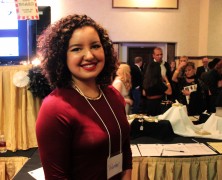
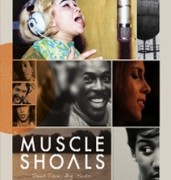

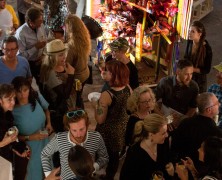


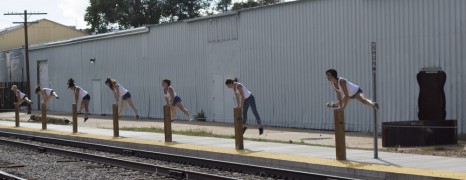


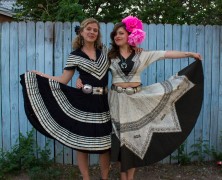
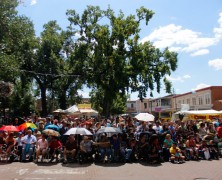

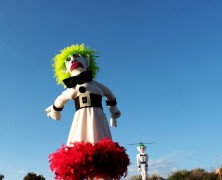

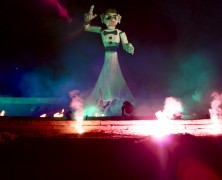
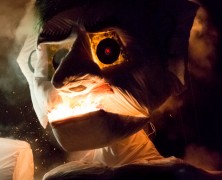
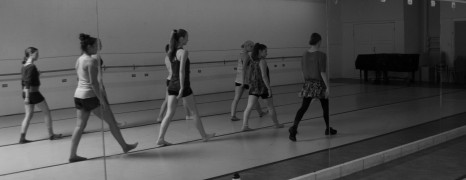


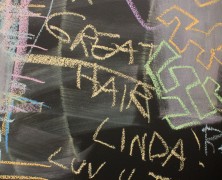

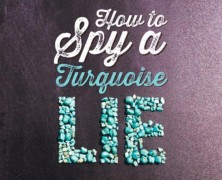

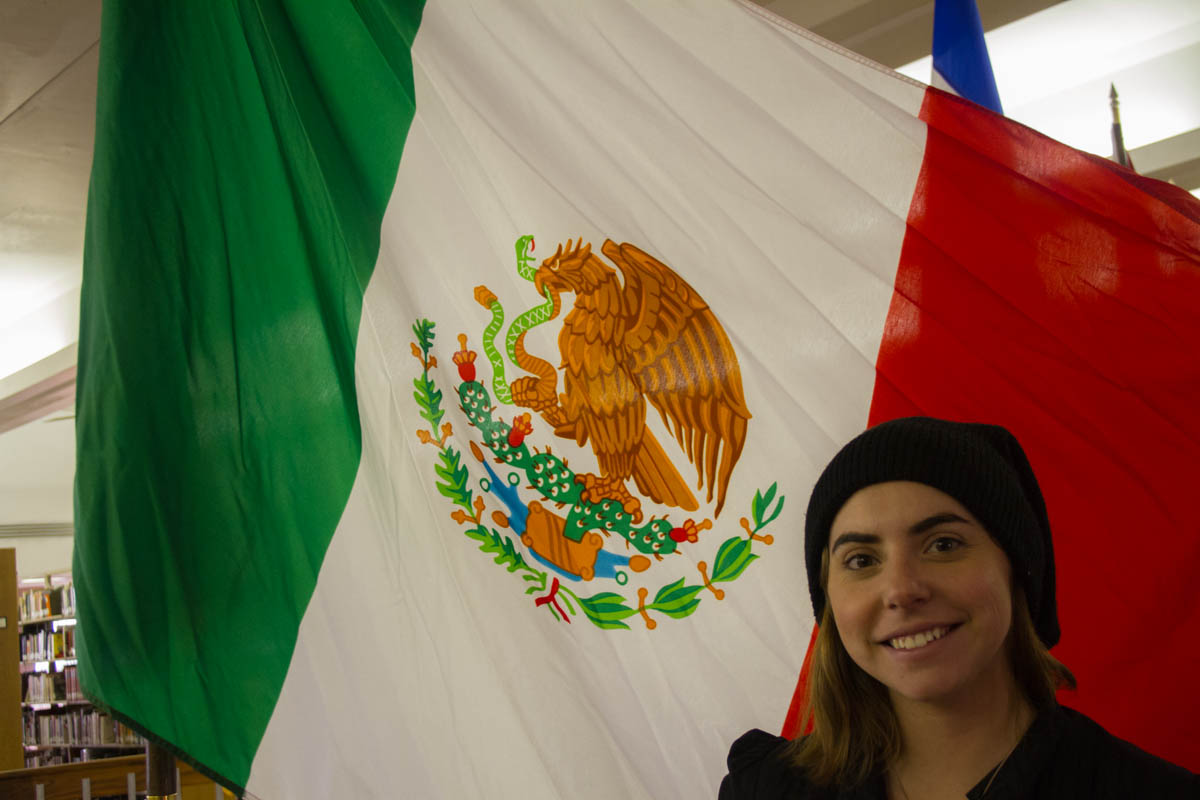

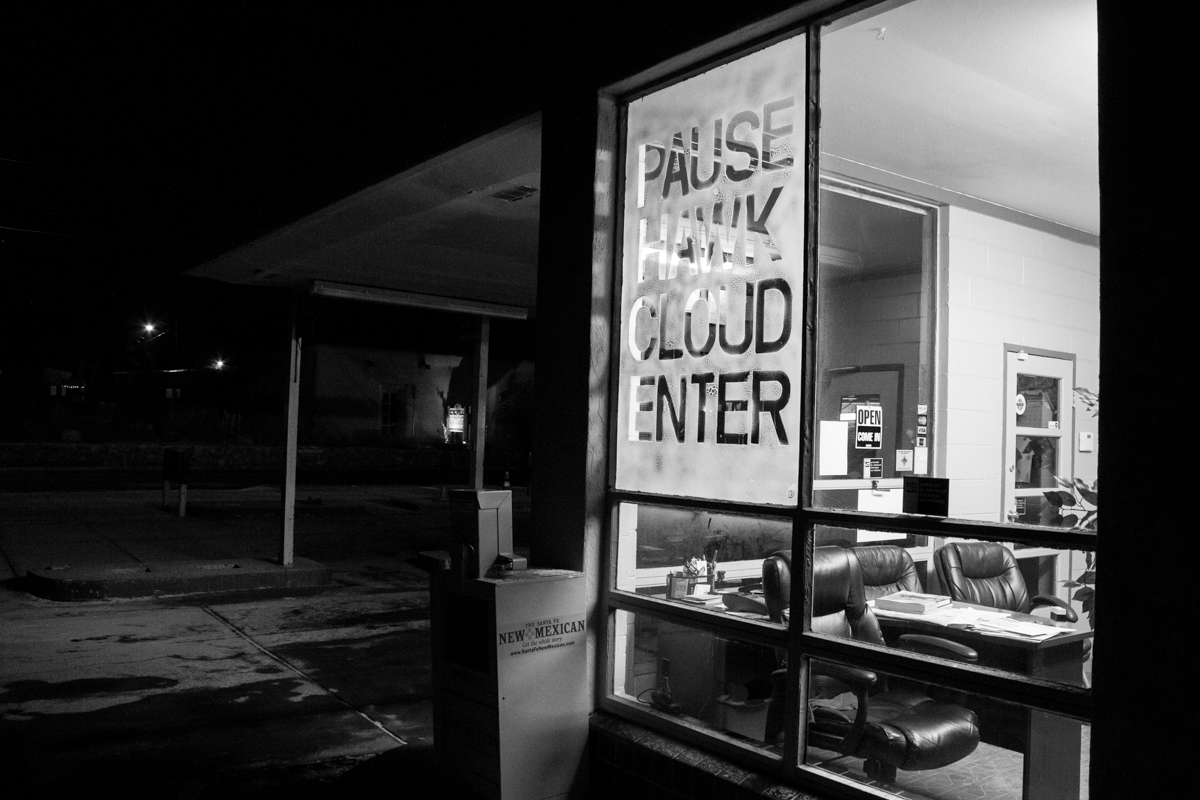

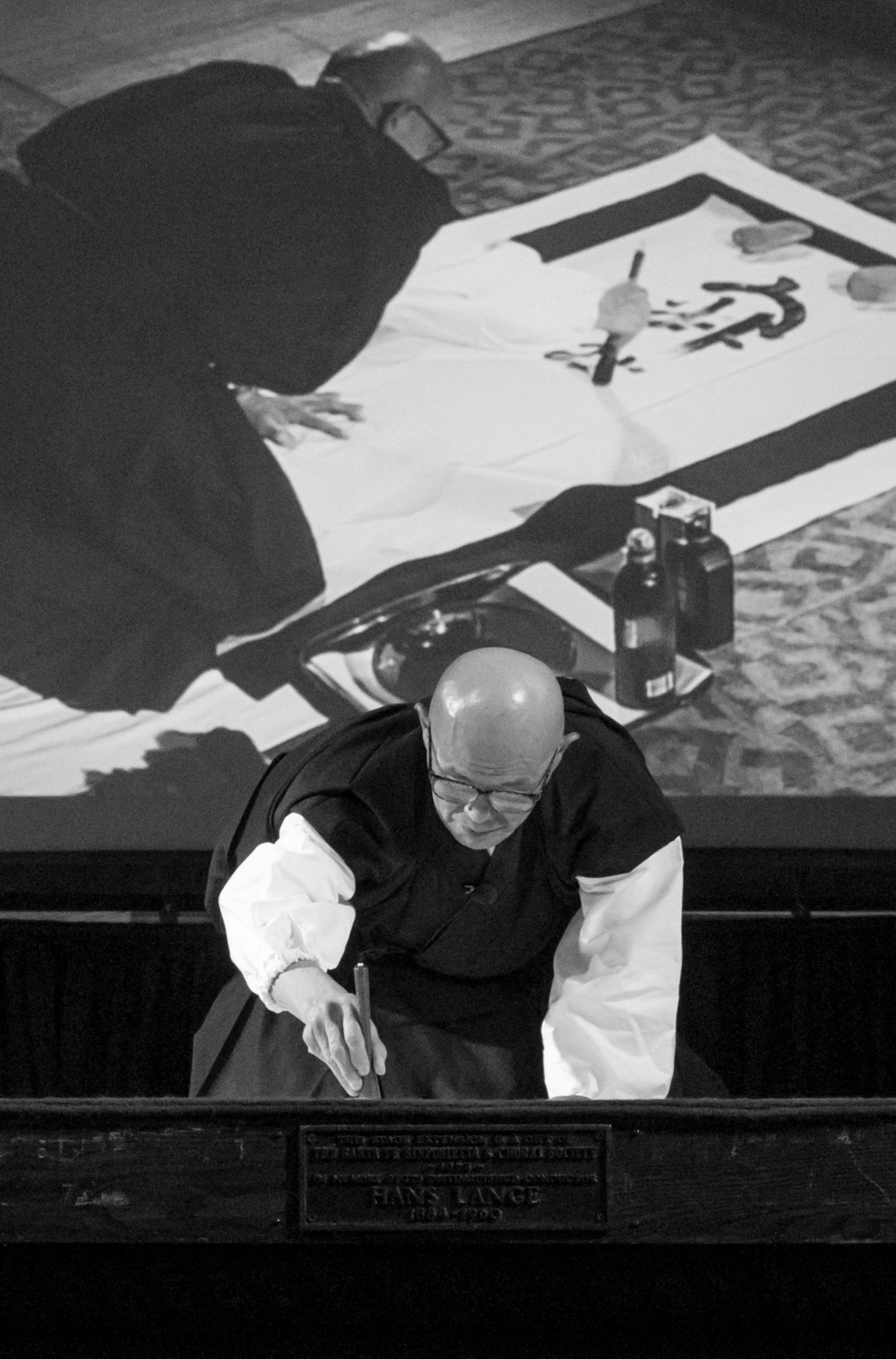

 Jackalope Magazine is the student magazine of Santa Fe University of Art and Design. Building on the interdisciplinary nature of our education, we aim to showcase the talent of our university and character of our city.
Jackalope Magazine is the student magazine of Santa Fe University of Art and Design. Building on the interdisciplinary nature of our education, we aim to showcase the talent of our university and character of our city.
Recent Comments